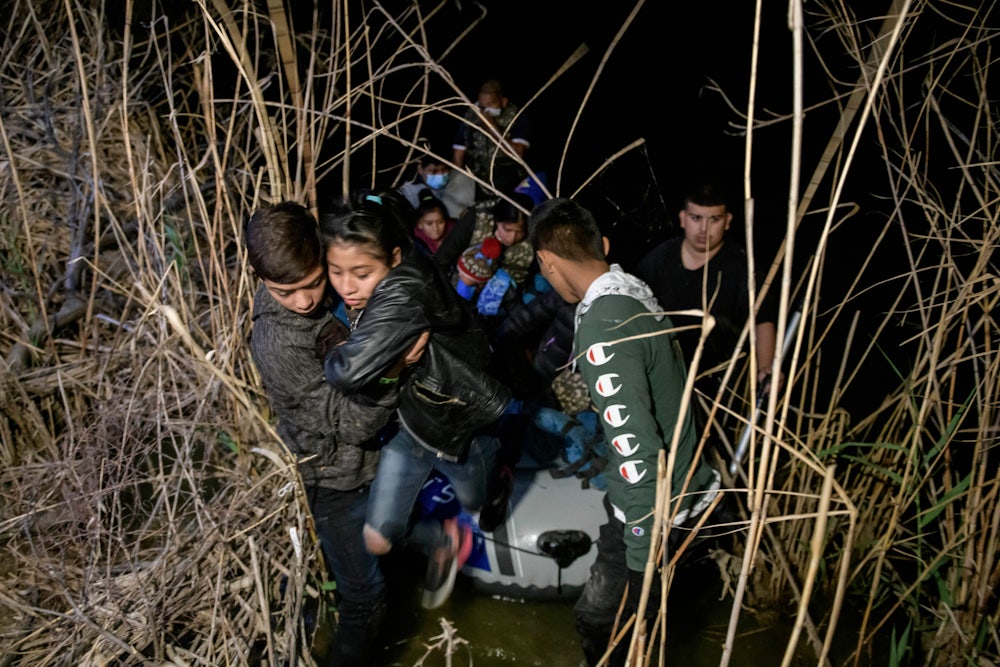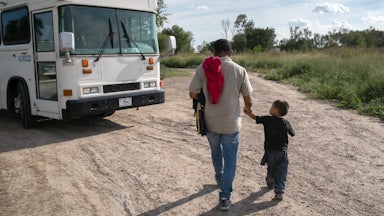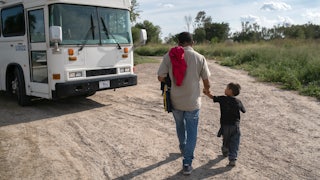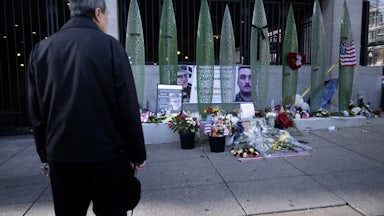There’s an interesting turn of phrase that’s come to dominate the Biden administration’s rhetoric around immigration: “root causes.”
This notion featured prominently in one of the president’s early executive orders on immigration, which directed executive agencies to develop strategies for “addressing the root causes of migration” and “collaboratively managing migration in [Central America],” a long-winded way of saying that regional governments would be roped into the broader project of stopping migration in the first place.
While the mismanaged border situation has sucked up a lot of the oxygen recently, it’s clear that Biden’s goal is to look beyond that and solve the problem of immigration altogether, a longtime goal of administrations Democratic and Republican. In short, Biden wants to try to improve conditions in Central American countries to the point where their citizens will no longer feel compelled to flee to the United States. Maybe the U.S. government really can help diminish the suffering of would-be asylum seekers in their countries of origin through foreign aid and diplomatic pressure to encourage anti-corruption efforts, but the expectation that this might absolve him of having to have a functioning asylum system is going to quickly run up against the realities of the coming crises, particularly the ever-creeping threat of climate cataclysm.
The idea of root causes isn’t inherently sinister, with this phrase and others like it appearing in academic writing and policy research for years. There are, after all, discrete, identifiable, and systemic issues driving people to uproot their lives and travel to the United States seeking economic and physical safety, these days mostly from the so-called Northern Triangle of Honduras, Guatemala, and El Salvador.
Yet in Washington’s legislative proposal, task forces, and policy outlines, the words take on an ominous and urgent tone, less that of a researcher and more of a doctor trying to identify the source of a spreading infection or a cancer. It must be found so it can be quickly excised to stop the spread, because in the eyes of U.S. policymakers on either side of the aisle, migrants are nothing more than a burden that can be dealt with more or less humanely, but dealt with nonetheless. And like a patient who’s smoked two packs a day for 30 years, the uncomfortable truth is that the genesis of these conditions might be staring back from the mirror.
While often discussed as if emerging from a vacuum, the state of weakness, corruption, inequality, and domination of organized crime that so often forms the basis of asylum seekers’ claims has been created and fomented at every turn by U.S. policymaking. Starting with early Cold War-era covert and overt military intervention and regime change and continuing through the exporting of gangs like MS-13—originally established in California—through harsh and short-sighted immigration enforcement during the “law and order” late ’80s and ’90s, there is almost no socio-political-economic issue plaguing these countries that doesn’t have U.S. fingerprints all over it. The primary root cause of humanitarian migration from Central America is the U.S. government.
Put another way, the mainstream conversation on asylum is already rooted in the wrong premise, that the migrants arriving at the border are in effect pleading for a display of benevolence from the U.S. and not merely asking it to take responsibility for the damage it has inflicted. The humanitarian migration framing in Congress and most of the media is like an endless debate about whether tossing lifesavers overboard will encourage others to also jump off a ship you just torpedoed. Of course, these people have also been failed by their own leaders, who have often chosen to save themselves and perpetuate the structural issues that are making the ship go down. But that doesn’t mean that we didn’t shoot the torpedoes.
Yet liberals and conservatives alike are in complete lockstep most of the way, only diverging on very narrow questions about just how cruel it’s acceptable to be to desperate migrants and to what extent it’s okay to violate federal and international law by turning them away to danger. Pundits and commentators of every stripe have spent the past several weeks pushing Biden to essentially seal off the border to asylum seekers without acknowledging that that Trump-holdover policy rests on shaky legal ground.
As Caitlin Dickerson recently wrote in The Atlantic, the reason conditions in facilities that initially house detained migrant children are so terrible is that each successive administration has decided it doesn’t want these children to be safe and comfortable at the risk of attracting more. Forget the fact that no one is making the decision to escape mortal danger based on the comfort of the detention conditions upon their arrival; very few people in the mainstream political conversation are even broaching the idea that perhaps it’s this country’s responsibility to receive those fleeing the situations it created, and that maybe the problem isn’t the migrants but our own carelessness, ignorance, and apathy.
Despite this lack of self-awareness, efforts to address the root causes of migration are welcome if they do indeed take the tack of improving the material and safety conditions of people on the ground (as opposed to, say, the previous administration’s efforts to simply outsource immigration enforcement to other countries). The Biden administration can and should work collaboratively—“collaboratively” being a key distinction worth emphasizing—with fellow governments to provide young people an alternative to the gangs, raise the standards of living, and strengthen each state’s ability to offer social services. However, there’s a disquieting finality to the intended objective here: to solve the issue of people seeking refuge.
This is part of a broader history of deluded solutionism among this country’s political decision-makers, who cannot or will not accept that there are some situations that the U.S. can’t quickly repair by just throwing enough money and personnel at the problem. It is this ideology that undergirds our forever wars, with the conviction that if we just hang on long enough and adopt the right strategy, we can fix it. It’s the ideology that has kept lawmakers and the public at large from accepting that no task force is ever going to fundamentally resolve the harms of the family separation policy, that there are people out there permanently scarred and de facto orphaned by the abject cruelty of our government in a way that will never be made okay.
In the near term, it might be viable for U.S. foreign aid to alleviate some of the pressures driving people away from their homes—especially given that, contrary to domestic popular belief, many asylum seekers would have preferred to stay if it had been safe to do so—but we must disabuse ourselves of the idea that this is a path to avoiding asylum flows at all. The U.S. refugee program has historically been pretty robust (though currently in a bad state), but it takes years of applications, checks, and processing for people to actually make it into the country. The administration now appears to be trying to expand the program in Central America in the hopes that, if and when the other measures aren’t enough, migrants still stay out of sight and out of mind for the American public until they’re ready to resettle, instead of showing up at the border.
Still, for people under imminent threat, particularly those able to reach the U.S. border, the clear choice is to make the trek, perilous and uncertain as it may be. And even as Biden tries to reduce these threats in Central America, he’ll have to face the looming risk that is set to soon become the primary driver of humanitarian migration: climate change. The unfolding disaster is already driving some refugees from Latin America and the Caribbean, with several countries recently experiencing high-intensity hurricanes, droughts, crop failures, and rising sea levels.
What we’ve seen so far is only a taste of the massive climate migrations to come, and like the political and security instability the U.S. has instigated, it is again primarily responsible for this catastrophe and its consequences while being best insulated from its fallout. (The U.S. military alone is reportedly a bigger polluter than over 100 lower-polluting countries combined.) Even as Biden takes some aggressive steps to combat climate change, some of the impact is at this point unavoidable; for millions of people in Central and South America, and around the world, climate crisis will make their lives untenable, and they will have to leave. Yet unlike people escaping state repression or violence, climate migrants won’t have even the nominal legal protections guaranteed by the current asylum process, which typically requires the former (and which are already often interpreted to exclude those escaping gang violence and economic destitution).
Will the U.S. stay firmly entrenched in the notion of humanitarian migration as a nuisance, an unfortunate conundrum detached from our own direct responsibility? Or will we acknowledge that receiving asylum seekers is not only a legal responsibility but a moral one, and an atonement for our excesses and short-sightedness? The pressure will always be there to separate cause and effect, for the public and our leaders to complain that we can’t accommodate everyone, as if it were a favor and they held no culpability. There’s still time to consider these questions before the next upswing in arrivals, and before the more dramatic effects of climate change, but not that much time. When we find ourselves yet again watching wall-to-wall coverage of the border, will the crisis be that people are still arriving, or will it be that we have washed our hands of their plight?








